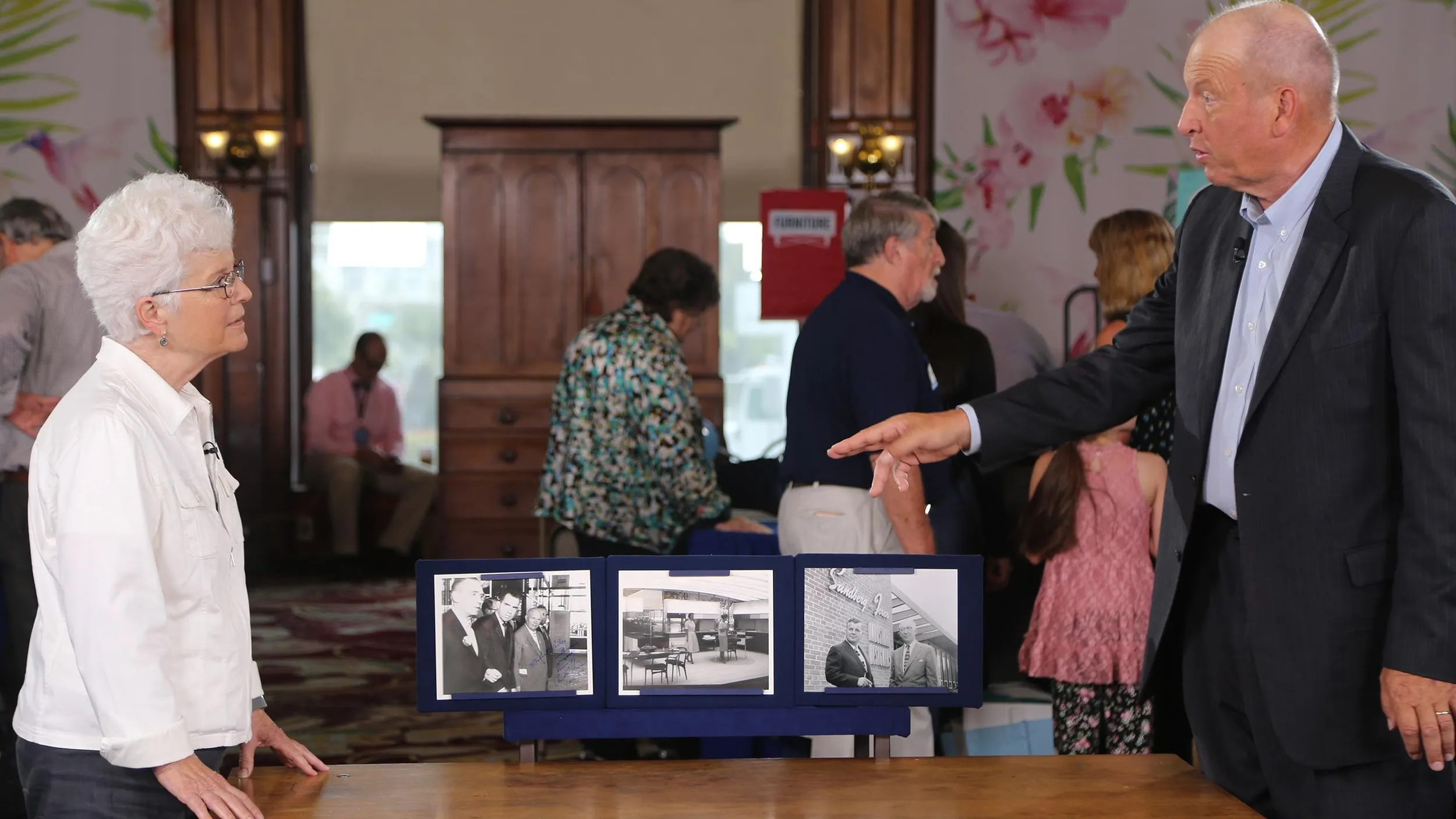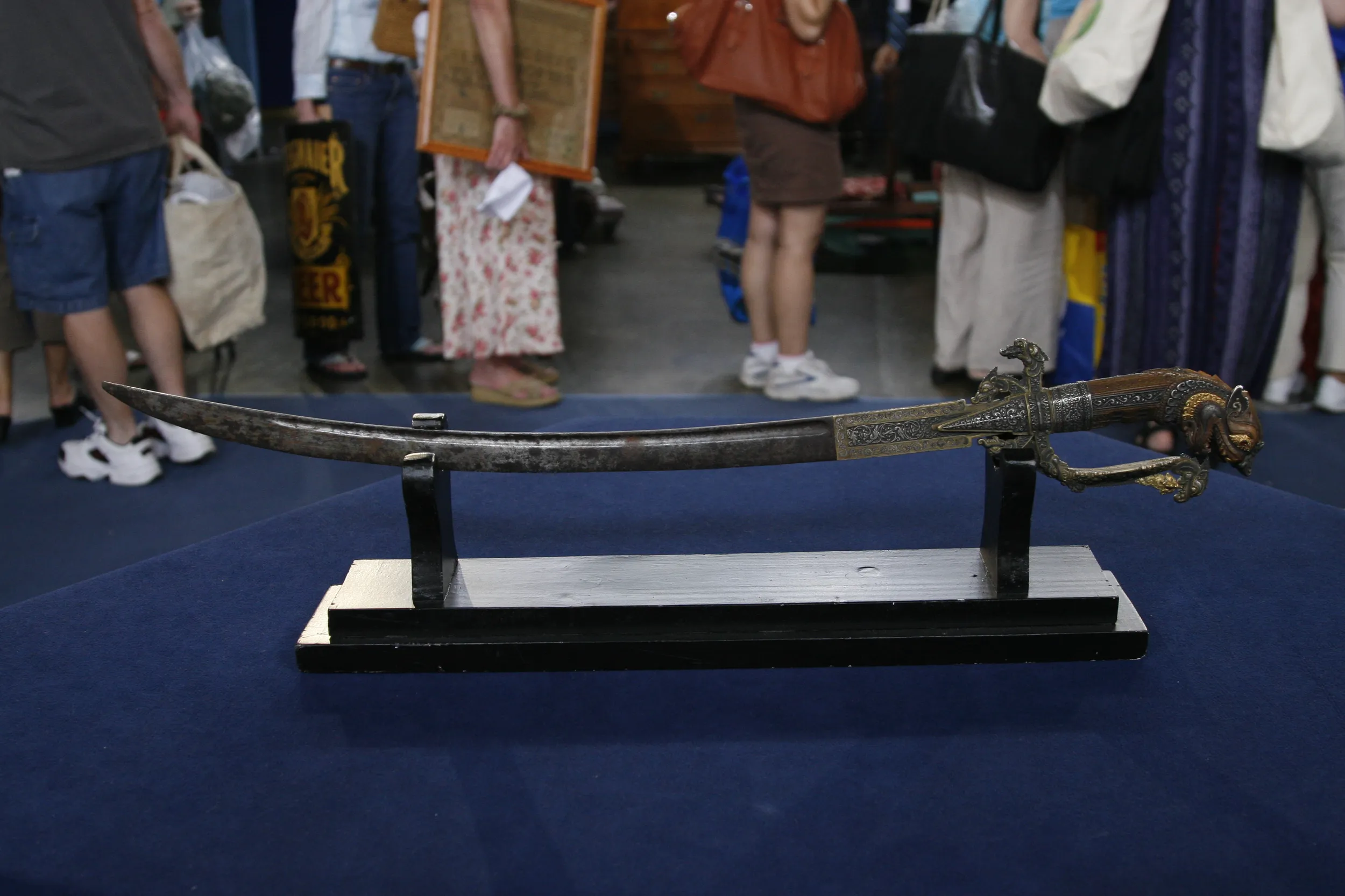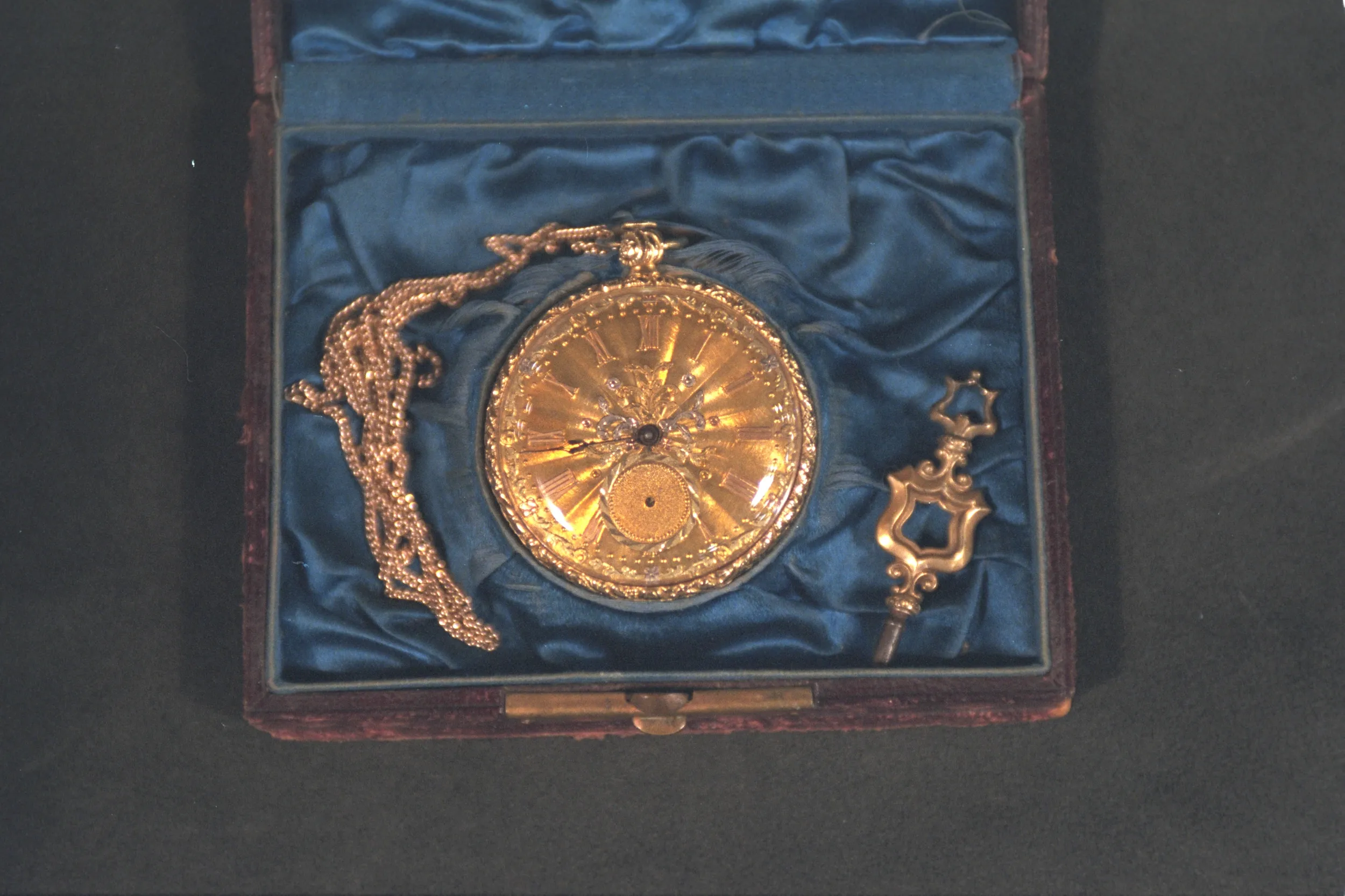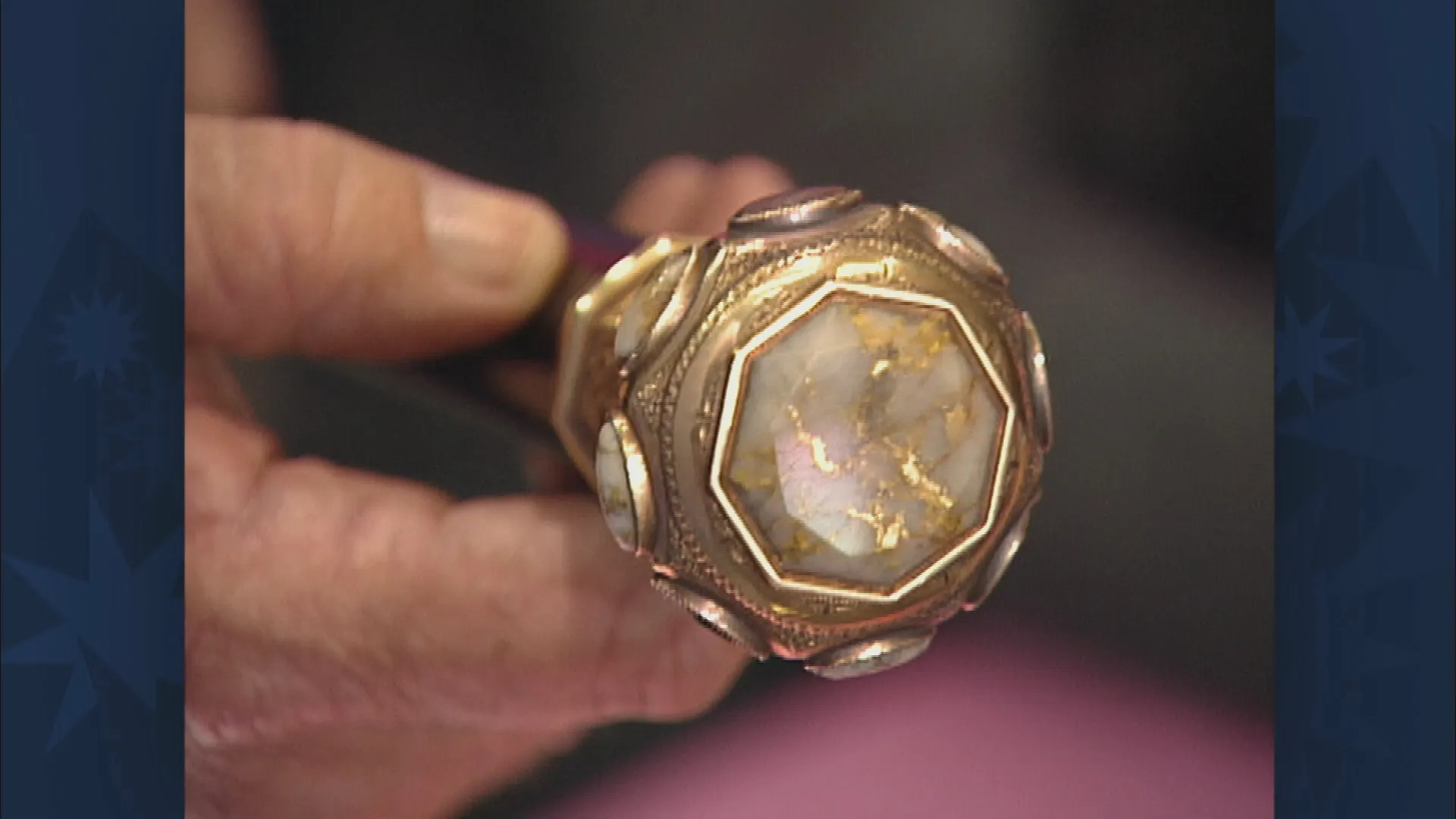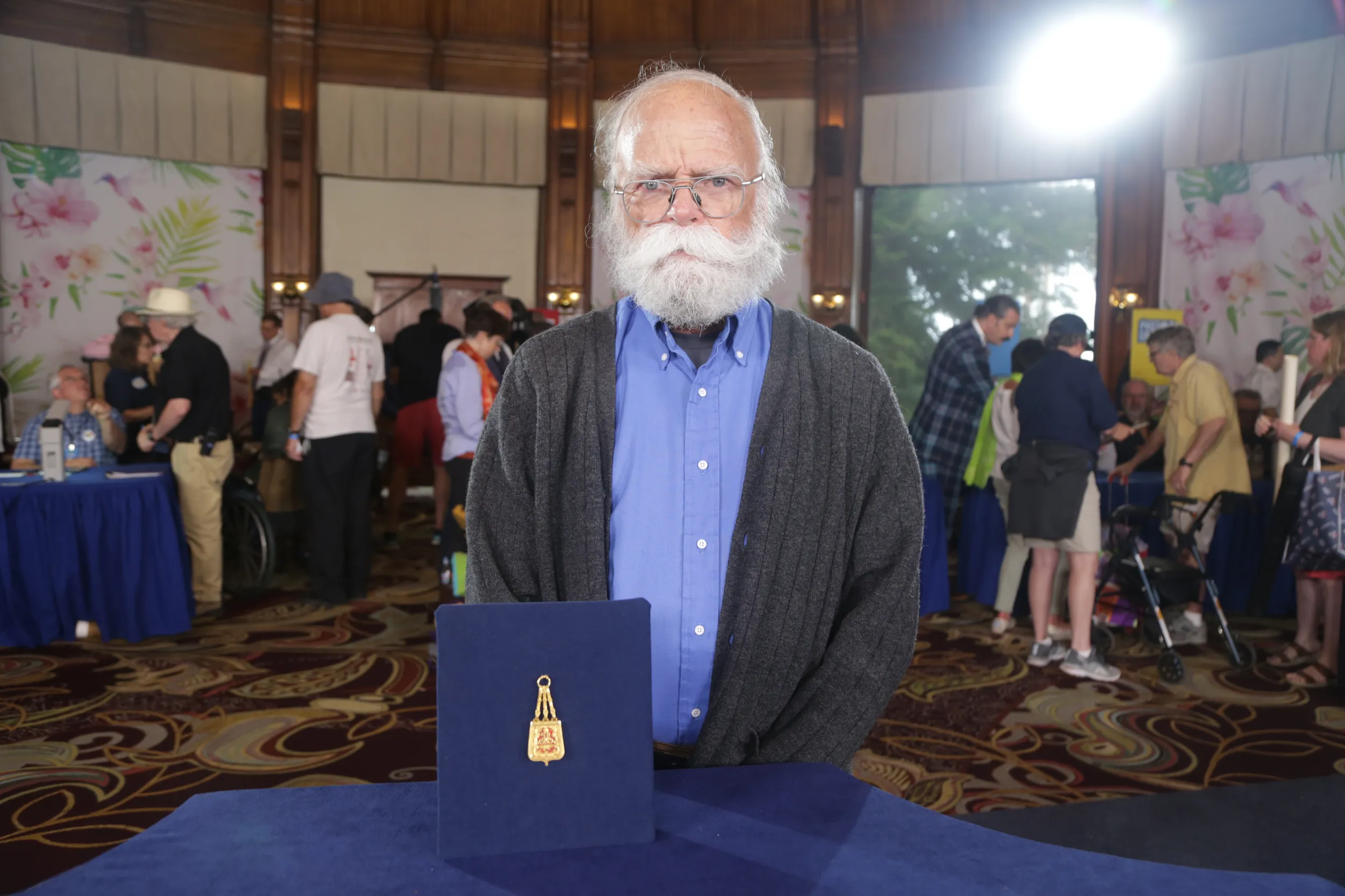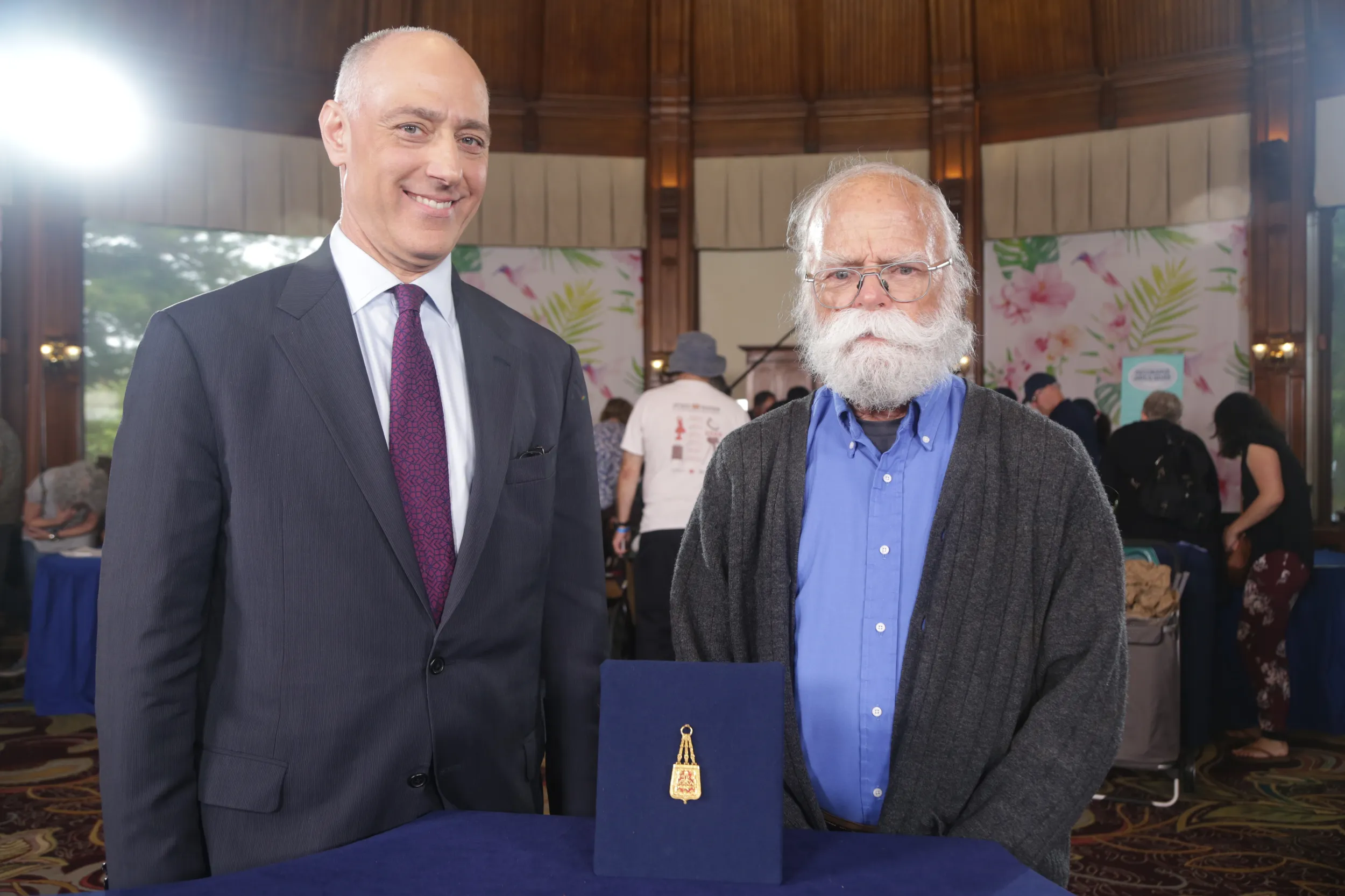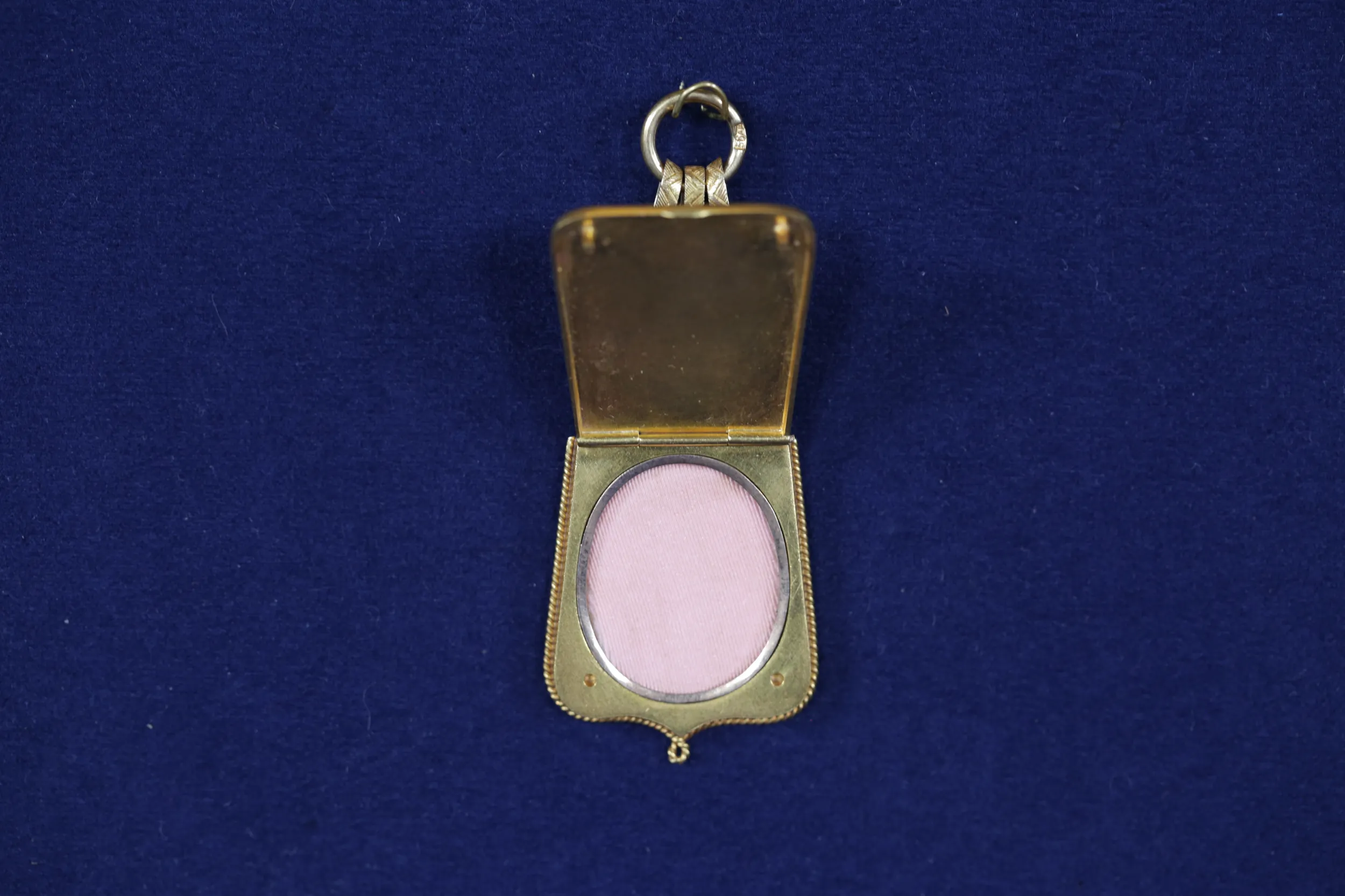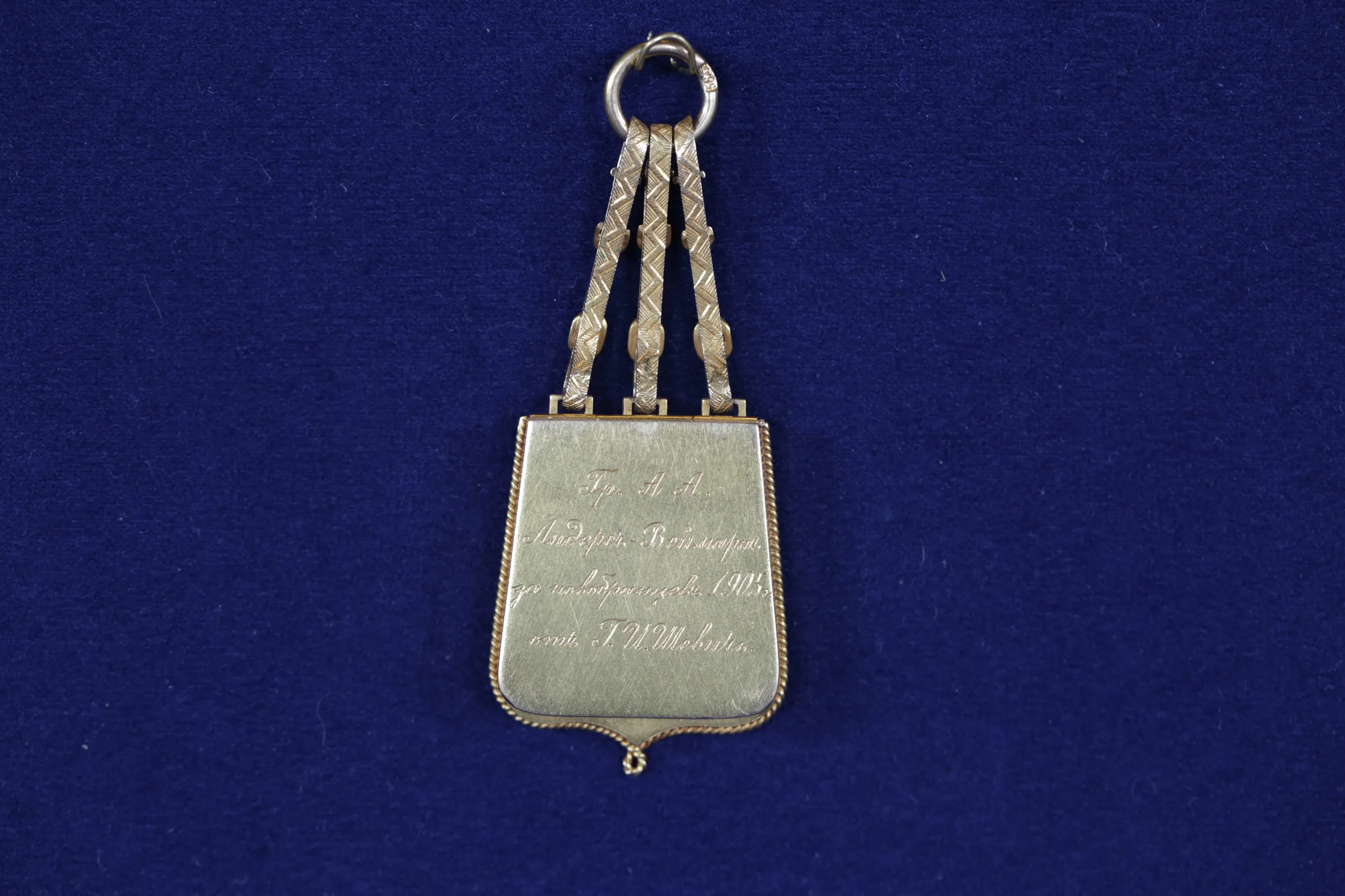GUEST: I had been looking at this in a pawnshop in Chula Vista, just south of San Diego, for quite a while, maybe a year or two. And finally talked the owner out of it for what we thought was a fair price, and took it home and then started research, discovered it was Russian, and it, it appears to have Nicholas II's cipher in it, and an inscription on the back, which is a personalized inscription from an officer in an army unit to one of his cadets.
APPRAISER: And how much did you pay for this from the pawn shop?
GUEST: Just under $1,000.
APPRAISER: Just under... and how long ago was that?
GUEST: Eight or ten years, something like that.
APPRAISER: This is one of the most beautiful pieces of goldwork I've seen in a very long time. What you have here is a, what's called a jeton, spelled J-E-T-O-N.
GUEST: Yeah.
APPRAISER: Which is basically a miniature order to be given as a gift. This was very popular, particularly in Russia. This particular jeton is in the form of a, what's called a sabretache, which is the bag that would have been worn by a cavalry officer from these straps here,
GUEST: Right.
APPRAISER: from their left side while riding the horse. There's just one hallmark on it, so we don't know who it's made by, but we know that it was made sometime between 1904 and 1908 and that it's made of gold, and it was made in St. Petersburg, Russia. This is all intricate, very beautiful goldwork. You are absolutely right. It's the monogram of the last tsar of Russia, Nicholas II, in the center, over a beautiful ground of red, deep red guilloché enamel. The condition of the enamel, the condition of the gold, is absolutely wonderful. After a little research, we discovered this is from the Imperial Guard, the personal life guard of the last tsar of Russia.
GUEST: Wow.
APPRAISER: And specifically the Hussar Regiment.
GUEST: Okay.
APPRAISER: Which was a light cavalry brigade. It's interesting, there's an inscription on the back. What you'll see is that it was... I'll skip to the end first. That it was from a gentleman called Shevich, which is written here in Cyrillic.
GUEST: Right.
APPRAISER: And he was a commander of the Hussar Regiment.
GUEST: Okay.
APPRAISER: So he was quite an important person at the time. And it was a gift to a princely family, which is named here, Alexander Lieders-Weymarn, who was a minister in the Interior Ministry of the tsar. So also an important person. It was a gift in 1905. Probably on the occasion of a new group of cadets entering into this regiment or finishing their training, or something like that.
GUEST: A graduation sort of thing.
APPRAISER: Exactly. So you see how this is a pouch here.
GUEST: Yes.
APPRAISER: And what's interesting about the pouch, in this case, just like a regular pouch, it actually opens. So it's also a locket that can be worn.
GUEST: Yes.
APPRAISER: Perhaps for the... a picture of the family of the recipient of the medal.
GUEST: It would have been nice to have that picture in there.
APPRAISER: Right, unfortunately, it's empty. Now... This was a gift for officers of the regiment, of the Hussar Regiment, from the commander of the regiment. It was... this was not bestowed on just anybody. This was one of the nicest and most expensive jetons, or gifts, that could be bestowed at that time. Some people have said this is one of the most beautiful made in Russia at that period, even. I think today, a retail value, conservatively, would be $12,000 today.
GUEST: Interesting.
APPRAISER: So I...
GUEST: But I, I'm more delighted to find the history of it, that that regiment was directly associated with the tsar.
APPRAISER: Absolutely.
GUEST: That, to me, is fantastic.

